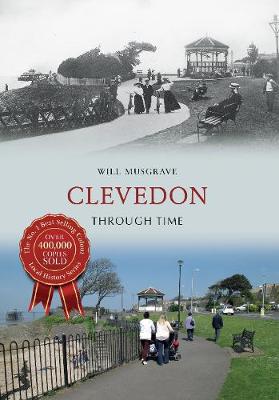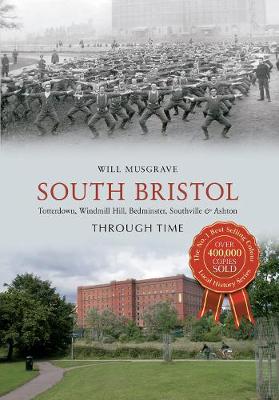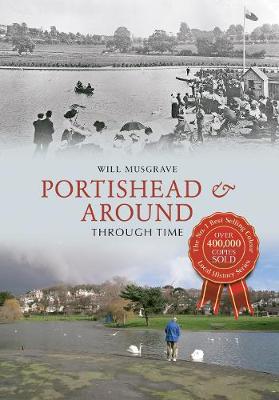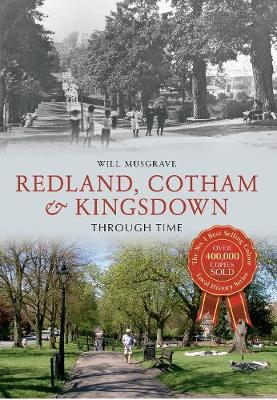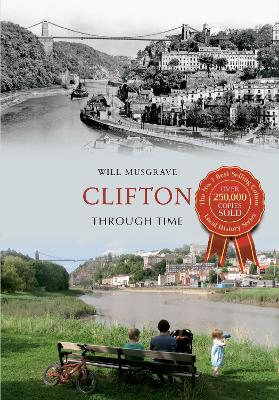Through Time
5 total works
Overlooking the Bristol Channel, the North Somerset town of Clevedon is one of the most picturesque seaside resorts in England. It has grown from an insignificant cluster of rural dwellings, at the end of the eighteenth century, to a bustling urban community in the space of just two centuries. Despite its rapid growth, it has managed to retain its traditional appeal and charm, as these beautifully illustrated pages show.
With its iconic pier, seaside walkways, ornamental gardens, beaches, Marine Lake and bathing areas, Clevedon is a haven for holidaymakers. Behind the seafront, the town boasts a fine selection of Victorian and Georgian buildings, historic churches, pubs, shops and unique landmarks. As this wonderful collection of old and new images shows, there is far more to the town than just deckchairs and donkey rides.
With its iconic pier, seaside walkways, ornamental gardens, beaches, Marine Lake and bathing areas, Clevedon is a haven for holidaymakers. Behind the seafront, the town boasts a fine selection of Victorian and Georgian buildings, historic churches, pubs, shops and unique landmarks. As this wonderful collection of old and new images shows, there is far more to the town than just deckchairs and donkey rides.
Once a sleepy rural community bordering the fields of North Somerset, the ancient Royal Manor of Bedminster spread along the banks of the River Avon, south of the City of Bristol. Today, this area comprises the vibrant suburbs of Totterdown, Windmill Hill, Bedminster itself, Southville and Ashton. The last 200 years have seen dramatic changes occur, as poor workers from the countryside flocked to this area in search of employment. With the help of before and after photographs a real sense of that change emerges; we see where local people lived and worked, and how they relaxed. Many of the shops, churches, pubs and factories have disappeared and the modern photographs show their replacements. Daily life has also altered - trams and horse carts have disappeared, but the vitality and community spirit is still in full view.
North Somerset has seen great changes in the last two centuries, and this evocative collection of old and new photographs shows how three of the county's communities, Portishead, Pill and Long Ashton, have altered and grown through time. All three had a close relationship with the old maritime port of Bristol, which shaped their history. As can be seen in these beautifully illustrated pages, many of the streets, shops, houses and workplaces have greatly changed.
Sitting on the edge of the Severn Estuary, Portishead was an insignificant North Somerset village in 1811, with a population of just 369. It was transformed over the next 100 years into a popular seaside resort with a busy dock. Today, Portishead has reinvented itself as a cosmopolitan town, complete with a magnificent marina. Dependent on Bristol's sea trade, Pill has had to adapt to the closure of Bristol's docks, while Long Ashton has grown from a rural outpost into a prosperous village.
Sitting on the edge of the Severn Estuary, Portishead was an insignificant North Somerset village in 1811, with a population of just 369. It was transformed over the next 100 years into a popular seaside resort with a busy dock. Today, Portishead has reinvented itself as a cosmopolitan town, complete with a magnificent marina. Dependent on Bristol's sea trade, Pill has had to adapt to the closure of Bristol's docks, while Long Ashton has grown from a rural outpost into a prosperous village.
Redland, Cotham & Kingsdown Through Time is a vibrant, historical exploration through a wonderful selection of old and new photographs of the neighbouring suburbs just north of Bristol's city centre. Only 200 years ago, Redland and Cotham were open fields while the Georgian terraces of Kingsdown were beginning to creep up the hill from the medieval heart of old Bristol. In his second title in this series, Bristol-born author and historian Will Musgrave examines the remarkably rapid growth of the area and shows how life has changed for the local residents. The streets, full of small shops, cars, trams and people dressed from a bygone era, and the architectural splendour of the houses, churches and schools are evocatively brought to life.
Described by the poet John Betjeman as 'the handsomest suburb of Europe', Clifton stands overlooking the centre of the ancient maritime city of Bristol. Made famous by Brunel's Suspension Bridge, Clifton is also well known for its splendid Georgian and Victorian architecture and its beautiful surroundings and views. It is home to the University of Bristol, the Bristol Museum and Art Gallery, Bristol Zoo Gardens and many other attractions such as the Downs, the Royal Promenade, the Avon Gorge and Clifton village itself. Clifton has a long and fascinating history from the Iron Age through to the eighteenth and nineteenth centuries, when it first became famous for housing visitors to the Hotwells spa and the home of wealthy Bristolian merchants and industrialists. In this book we see how Clifton has evolved while retaining its sense of community. Churches, pubs, shops and businesses have developed and changed through time but there is a remarkable feeling of continuous vibrancy and growth. History and modern life have truly melded together in Clifton and its neighbourhood.
